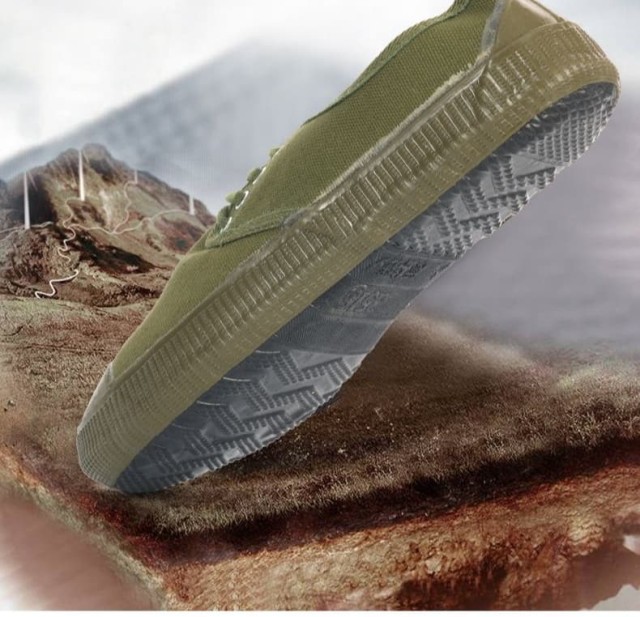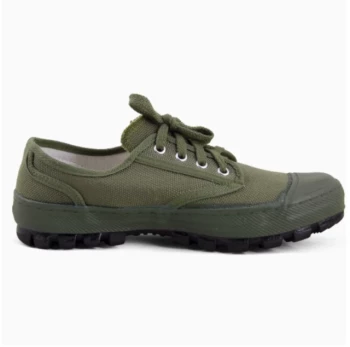When your job or environment involves slippery surfaces, the right footwear isn’t just about comfort—it’s a safety necessity. But not all rubber soles are created equal. This guide breaks down the science-backed factors that determine genuine slip resistance, helping you select shoes that keep you steady in high-risk scenarios.
Why Rubber Alone Isn’t Enough for Slip Resistance
Many assume rubber soles automatically mean slip-proof, but research shows traction depends on three interconnected elements:
- Tread Patterns: Deep grooves or hexagonal designs channel liquids away from the sole’s contact points, reducing hydroplaning risks.
- Rubber Compounds: Softer rubber molds to surface imperfections, creating micro-grips invisible to the eye.
- Sole Geometry: Slightly rounded edges let liquids escape laterally, unlike flat soles that trap moisture.
For example, a shoe with deep treads but stiff rubber might fail on oily floors, while a soft sole with poor treads could wear out too quickly. Balance is key.
The Science Behind Tread Patterns and Surface Interaction
Tread patterns act like miniature drainage systems. Studies reveal:
- Hexagonal or circular grooves outperform straight lines by dispersing liquids radially.
- Groove depth matters: Too shallow, and water isn’t fully displaced; too deep, and the sole loses surface contact.
Pro Tip: Press the sole against a wet paper towel. If water spreads evenly through the grooves (instead of pooling), the design is effective.
How Rubber Compounds Impact Traction on Wet Surfaces
Rubber hardness (measured in durometer) directly affects grip:
- Softer rubber (50–70A durometer): Grips better on wet or oily surfaces but wears faster.
- Firmer rubber (80A+): Durable but may compromise traction.
In high-risk environments like commercial kitchens, prioritize softer compounds—even if replacements are needed more often.
Sole Design Features That Enhance Stability
Subtle engineering choices make a difference:
- Rounded edges: Reduce "suction" on wet floors by allowing lateral fluid escape.
- Multi-density soles: Combine softer heel zones (for impact absorption) with firmer forefoot areas (for durability).
Did you know? Shoes with a slight rocker profile (curved from heel to toe) improve natural gait, reducing fatigue on slippery surfaces.
Validating Slip Resistance: Certifications and Real-World Testing
Look for Third-Party Ratings
Certifications like SATRA TM144 or EN ISO 20345 indicate rigorous testing for slip resistance. These evaluate shoes under conditions mimicking oil, water, and inclined surfaces.
DIY Tests (When Certifications Aren’t Available)
- The Paper Towel Test: As mentioned earlier, check liquid dispersion.
- The Incline Test: Walk cautiously on a wet, angled surface (e.g., a ramp). If you feel unstable at over 15 degrees, reconsider.
- Compare Pairs: Test new shoes against a trusted pair on the same surface. Differences in grip are often noticeable immediately.
Stay Safe with the Right Footwear
Slip-resistant shoes are an investment in safety, not just comfort. By prioritizing tread design, rubber softness, and certified performance, you can confidently navigate hazardous environments.
Need bulk orders of safety footwear? 3515 manufactures rigorously tested slip-resistant shoes for distributors and brands—combining advanced materials with ergonomic designs to protect workers where it matters most. [Contact us] to discuss custom solutions tailored to your needs.
Related Products
- Durable High-Traction Canvas Sneakers Wholesale & Custom Manufacturing
- Durable Rubber Sole Outdoor Shoes Wholesale & Custom Manufacturing
- Factory-Direct Wholesale Canvas Boots with High-Traction Rubber Soles
- Durable Canvas Work Shoes with Rubber Lug Sole | Wholesale Manufacturer
- Wholesale Durable Camo Canvas Shoes with High-Traction Rubber Soles
Related Articles
- How to Choose Work Boot Outsoles Based on Your Job Hazards and Terrain
- How to Choose Rubber-Soled Shoes That Truly Prevent Slips
- How to Wear Sneakers Professionally: A Style Guide for Modern Workplaces
- Blake Stitch vs. Goodyear Welt: Decoding Durability, Repairability, and Ideal Use Cases
- How Rubber-Soled Shoes Master All Seasons: The Science of Traction and Adaptability
















